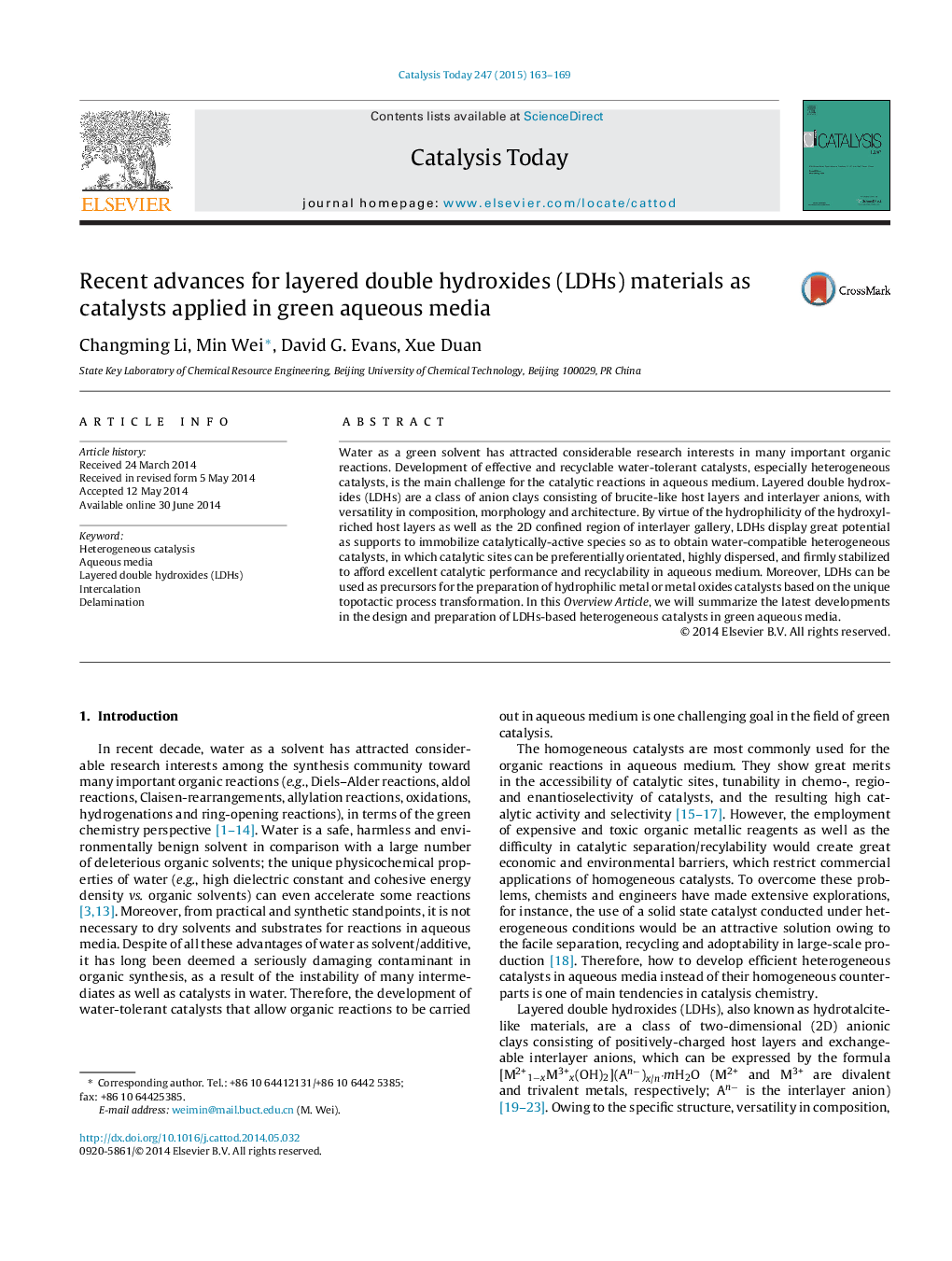| Article ID | Journal | Published Year | Pages | File Type |
|---|---|---|---|---|
| 54025 | Catalysis Today | 2015 | 7 Pages |
•LDHs possess unique features: intercalation, delamination, topotactic process.•LDHs display great potential to fabricate water-compatible heterogeneous catalysts.•These catalysts afford excellent catalytic performance in aqueous medium.•We summarize the recent progress of these catalysts in this Overview Article.•The current challenges and future strategies are also discussed.
Water as a green solvent has attracted considerable research interests in many important organic reactions. Development of effective and recyclable water-tolerant catalysts, especially heterogeneous catalysts, is the main challenge for the catalytic reactions in aqueous medium. Layered double hydroxides (LDHs) are a class of anion clays consisting of brucite-like host layers and interlayer anions, with versatility in composition, morphology and architecture. By virtue of the hydrophilicity of the hydroxyl-riched host layers as well as the 2D confined region of interlayer gallery, LDHs display great potential as supports to immobilize catalytically-active species so as to obtain water-compatible heterogeneous catalysts, in which catalytic sites can be preferentially orientated, highly dispersed, and firmly stabilized to afford excellent catalytic performance and recyclability in aqueous medium. Moreover, LDHs can be used as precursors for the preparation of hydrophilic metal or metal oxides catalysts based on the unique topotactic process transformation. In this Overview Article, we will summarize the latest developments in the design and preparation of LDHs-based heterogeneous catalysts in green aqueous media.
Graphical abstractFigure optionsDownload full-size imageDownload high-quality image (184 K)Download as PowerPoint slide
